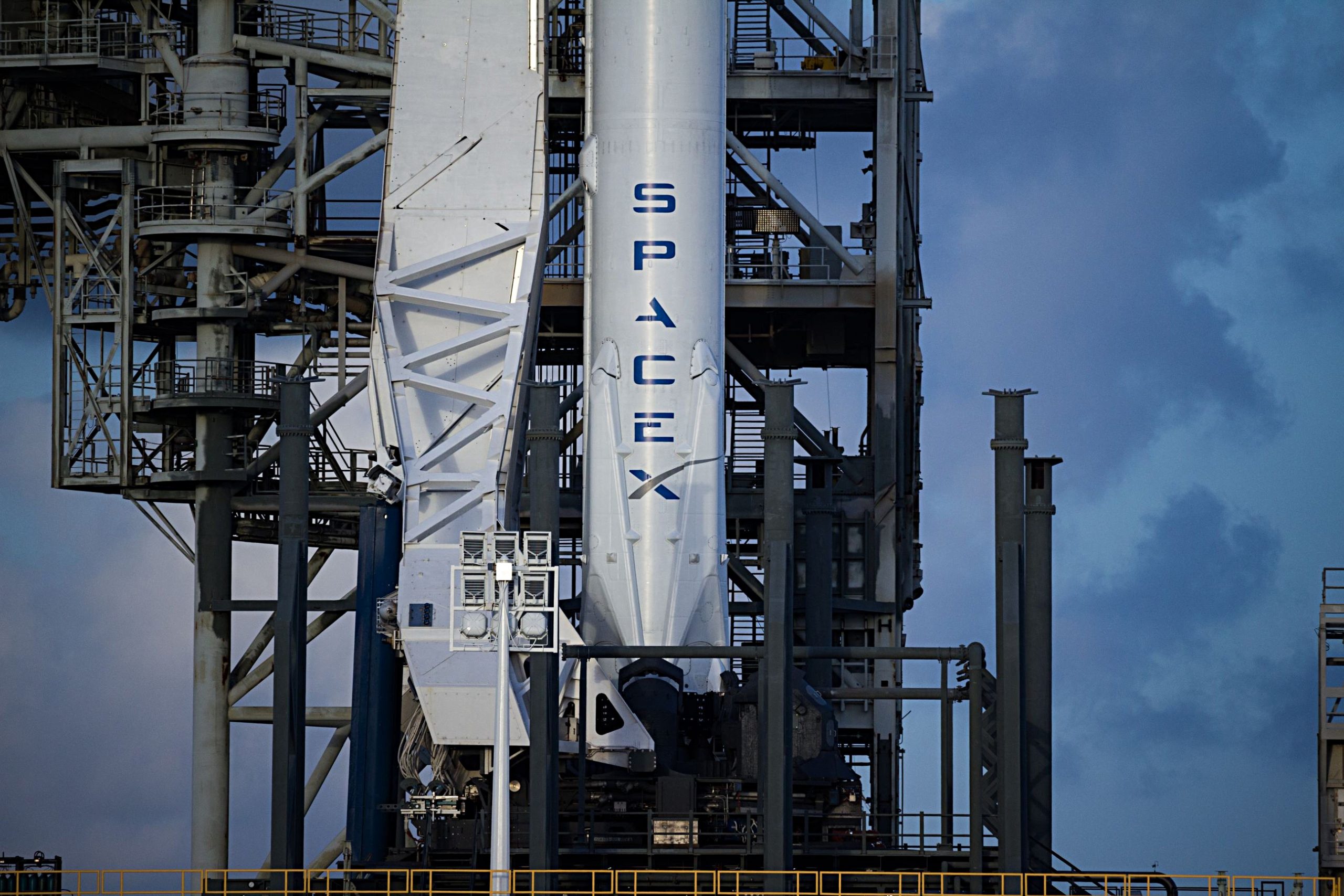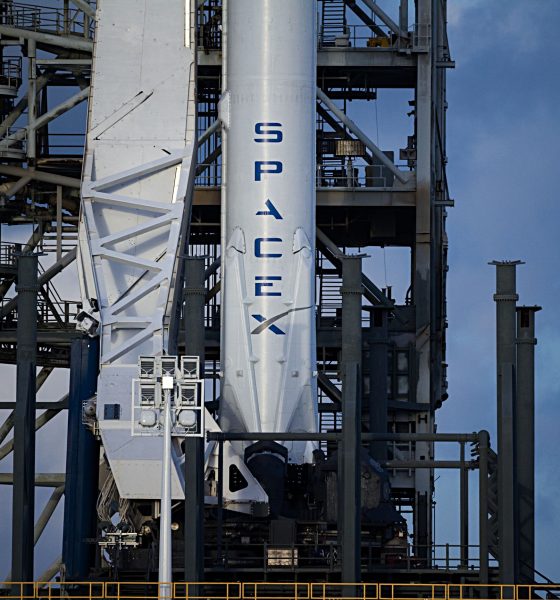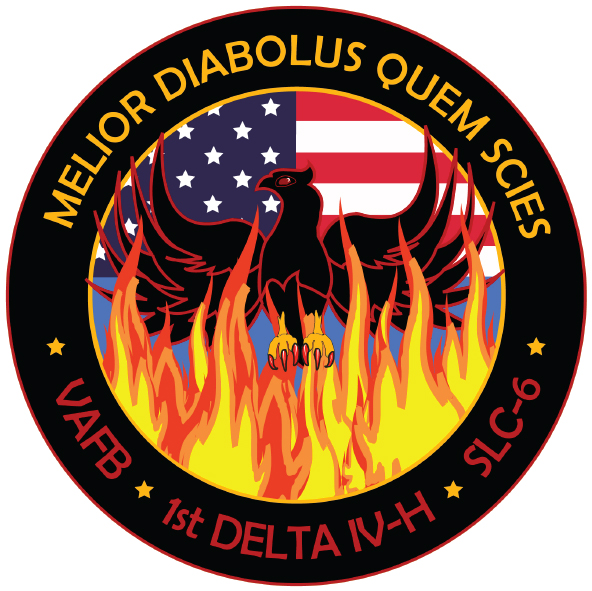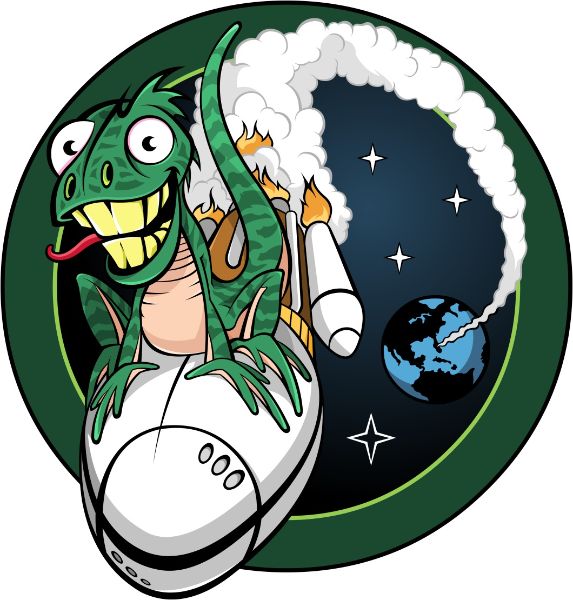

News
SpaceX to launch secret “Zuma” payload same day as Tesla Semi event
SpaceX has completed preparations and is ready to launch the highly secretive “Zuma” satellite(s) at 5pm/8pm PST/EST on Thursday, November 16th, the same day Tesla will be holding its semi-truck unveiling event.
Updated: SpaceX has rescheduled the Zuma mission.
SpaceX's highly secretive mission originally scheduled for today has been rescheduled for 8pm ET Fri., Nov. 17. On-the-ground photos from today – https://t.co/CUHuwP2lT3 pic.twitter.com/TZVBhjTOzw
— TESLARATI (@Teslarati) November 16, 2017
The Zuma launch campaign has been veiled in an extraordinary level of secrecy for SpaceX and the US launch industry in general, and this has piqued the interest of many.
In the last decade or two, the United States military apparatus has launched many dozens of satellites, and secrecy on the order of Zuma is unusual to say the least. Missions for the National Reconnaissance Office (NRO) typically feature some level of media presence and have developed a community of fans in the age of social media, taking advantage of cartoonish mission logos that can often be entertaining, if not vaguely disturbing.
Some of the more ‘unique’ NROL logos in recent years. (NRO)
However, no federal agency has yet to announce involvement in Zuma. The full extent of public information available can be found in a handful of tweets, with drastically less official info available from a leaky source on Reddit. Thus far, Northrop Grumman is known to have at least procured Zuma’s launch from SpaceX, and the same statement indirectly suggested that Zuma was in fact a government-related mission. NRO is the obvious option, with the Air Force or another branch of the US military or intelligence apparatus also a distinct possibility. It is entirely possible that the nature and parent of the mission will remain secret for the indefinite future, even after its launch.
Nevertheless, a handful of details allow us to speculate in greater detail. In May 2017, SpaceX launched NROL-76, a Department of Defense satellite that was intriguingly observed to have made very close passes to the International Space Station, far too close to have been a coincidence. Based on Notices to Airmen (NOTAMs) filed with the FAA and discussed earlier this week, it appears Zuma may be placed in an orbit very similar to that of NROL-76, suggesting that Zuma could be an iteration on NROL-76’s supposed orbit-to-orbit data gathering capabilities. This time, however, agency involvement has been completely shadowed. A blank fairing, sans any NROL-reminiscent logo, will be the tell-tale sign come tomorrow, when Teslarati’s launch photographer Tom Cross arrives at Kennedy Space Center for camera setup.
Northrop Grumman on #SpaceX Zuma launch: "This represents a cost effective approach to space access for government missions. Northrop realizes that this is monumental responsibility and has taken great care to ensure the most affordable and lowest risk scenario for Zuma."
— Robin Seemangal (@nova_road) November 13, 2017
Meanwhile, as has become shockingly routine, SpaceX’s Falcon 9 first stage, core 1043, will conduct a Return to Launch Site (RTLS), landing at LZ-1 just a few miles from its launch pad. Like NROL-76, we can expect live coverage of the second stage and payload to end immediately after stage separation; bittersweet but esoteric fans, but likely to result in a unique focus on the stage returning to Earth.
On the horizon
Possibly more exciting than the launch itself, Zuma is expected to be the last launch from SpaceX’s Kennedy Space Center LC-39A facilities until Falcon Heavy, currently aiming for an inaugural flight around December 29th. After a solid year of repairs and refurbishment, SpaceX’s LC-40 launch pad is anticipating a return to flight operations with the CRS-13 Cargo Dragon mission on December 4th. Located within the Cape Canaveral Air Force Station just a few miles south of LC-39A, LC-40 suffered widespread damage after a Falcon 9 catastrophically failed while preparing for a static fire test on the pad.
Despite the tragic loss of vehicle and the Amos-6 payload, SpaceX has maintained a strong relationship with the owner, Spacecom, and was recently chosen for both a contractual reflight in 2019 and an additional launch in 2020.
SpaceX has also made great strides since returning to flight after Amos-6 in January 2017, and has enjoyed a truly groundbreaking year of incredible progress towards the goal of rapid reusability. Quite fittingly, LC-40 is expected to return to action while hosting yet another commercial reuse of a Falcon 9 first stage, this time with the hugely significant approval of NASA. The space agency has yet to make this decision resoundingly public, but respected industry insider NASASpaceflight.com has stated that it is all but in stone at this point in time. In a sense, the disaster that severely damaged LC-40 acted as a since-heeded wake-up call for SpaceX, and the venerable pad will rise from those ashes into a new era of reusable rocketry, led wholeheartedly by SpaceX.
Be sure to follow our Instagram stories and see live action directly from the launch site at the Kennedy Space Center!

News
Tesla FSD fleet is nearing 7 billion total miles, including 2.5 billion city miles
As can be seen on Tesla’s official FSD webpage, vehicles equipped with the system have now navigated over 6.99 billion miles.

Tesla’s Full Self-Driving (Supervised) fleet is closing in on almost 7 billion total miles driven, as per data posted by the company on its official FSD webpage.
These figures hint at the massive scale of data fueling Tesla’s rapid FSD improvements, which have been quite notable as of late.
FSD mileage milestones
As can be seen on Tesla’s official FSD webpage, vehicles equipped with the system have now navigated over 6.99 billion miles. Tesla owner and avid FSD tester Whole Mars Catalog also shared a screenshot indicating that from the nearly 7 billion miles traveled by the FSD fleet, more than 2.5 billion miles were driven inside cities.
City miles are particularly valuable for complex urban scenarios like unprotected turns, pedestrian interactions, and traffic lights. This is also the difference-maker for FSD, as only complex solutions, such as Waymo’s self-driving taxis, operate similarly on inner-city streets. And even then, incidents such as the San Francisco blackouts have proven challenging for sensor-rich vehicles like Waymos.
Tesla’s data edge
Tesla has a number of advantages in the autonomous vehicle sector, one of which is the size of its fleet and the number of vehicles training FSD on real-world roads. Tesla’s nearly 7 billion FSD miles then allow the company to roll out updates that make its vehicles behave like they are being driven by experienced drivers, even if they are operating on their own.
So notable are Tesla’s improvements to FSD that NVIDIA Director of Robotics Jim Fan, after experiencing FSD v14, noted that the system is the first AI that passes what he described as a “Physical Turing Test.”
“Despite knowing exactly how robot learning works, I still find it magical watching the steering wheel turn by itself. First it feels surreal, next it becomes routine. Then, like the smartphone, taking it away actively hurts. This is how humanity gets rewired and glued to god-like technologies,” Fan wrote in a post on X.
News
Tesla starts showing how FSD will change lives in Europe
Local officials tested the system on narrow country roads and were impressed by FSD’s smooth, human-like driving, with some calling the service a game-changer for everyday life in areas that are far from urban centers.

Tesla has launched Europe’s first public shuttle service using Full Self-Driving (Supervised) in the rural Eifelkreis Bitburg-Prüm region of Germany, demonstrating how the technology can restore independence and mobility for people who struggle with limited transport options.
Local officials tested the system on narrow country roads and were impressed by FSD’s smooth, human-like driving, with some calling the service a game-changer for everyday life in areas that are far from urban centers.
Officials see real impact on rural residents
Arzfeld Mayor Johannes Kuhl and District Administrator Andreas Kruppert personally tested the Tesla shuttle service. This allowed them to see just how well FSD navigated winding lanes and rural roads confidently. Kruppert said, “Autonomous driving sounds like science fiction to many, but we simply see here that it works totally well in rural regions too.” Kuhl, for his part, also noted that FSD “feels like a very experienced driver.”
The pilot complements the area’s “Citizen Bus” program, which provides on-demand rides for elderly residents who can no longer drive themselves. Tesla Europe shared a video of a demonstration of the service, highlighting how FSD gives people their freedom back, even in places where public transport is not as prevalent.
What the Ministry for Economic Affairs and Transport says
Rhineland-Palatinate’s Minister Daniela Schmitt supported the project, praising the collaboration that made this “first of its kind in Europe” possible. As per the ministry, the rural rollout for the service shows FSD’s potential beyond major cities, and it delivers tangible benefits like grocery runs, doctor visits, and social connections for isolated residents.
“Reliable and flexible mobility is especially vital in rural areas. With the launch of a shuttle service using self-driving vehicles (FSD supervised) by Tesla in the Eifelkreis Bitburg-Prüm, an innovative pilot project is now getting underway that complements local community bus services. It is the first project of its kind in Europe.
“The result is a real gain for rural mobility: greater accessibility, more flexibility and tangible benefits for everyday life. A strong signal for innovation, cooperation and future-oriented mobility beyond urban centers,” the ministry wrote in a LinkedIn post.
News
Tesla China quietly posts Robotaxi-related job listing
Tesla China is currently seeking a Low Voltage Electrical Engineer to work on circuit board design for the company’s autonomous vehicles.

Tesla has posted a new job listing in Shanghai explicitly tied to its Robotaxi program, fueling speculation that the company is preparing to launch its dedicated autonomous ride-hailing service in China.
As noted in the listing, Tesla China is currently seeking a Low Voltage Electrical Engineer to work on circuit board design for the company’s autonomous vehicles.
Robotaxi-specific role
The listing, which was shared on social media platform X by industry watcher @tslaming, suggested that Tesla China is looking to fill the role urgently. The job listing itself specifically mentions that the person hired for the role will be working on the Low Voltage Hardware team, which would design the circuit boards that would serve as the nervous system of the Robotaxi.
Key tasks for the role, as indicated in the job listing, include collaboration with PCB layout, firmware, mechanical, program management, and validation teams, among other responsibilities. The role is based in Shanghai.
China Robotaxi launch
China represents a massive potential market for robotaxis, with its dense urban centers and supportive policies in select cities. Tesla has limited permission to roll out FSD in the country, though despite this, its vehicles have been hailed as among the best in the market when it comes to autonomous features. So far, at least, it appears that China supports Tesla’s FSD and Robotaxi rollout.
This was hinted at in November, when Tesla brought the Cybercab to the 8th China International Import Expo (CIIE) in Shanghai, marking the first time that the autonomous two-seater was brought to the Asia-Pacific region. The vehicle, despite not having a release date in China, received a significant amount of interest among the event’s attendees.











